On New Year’s Day, I read an article by Annie Duflo and Jeffrey Mosenkis in The Washington Post, intriguingly titled “Why it was actually a good year.”
Duflo and Mosenkis connect two dots. The first is the observation that between 1990 and 2013, the number of people in extreme poverty fell by more than a billion. The second is that field research has taught us how to best help the poor: give the poor cash (ATM style), train people to go to the homes of the poor with medications (Avon lady style), give the poor access to mobile money (M-Pesa style, explained here), and send them regular text messages to save money, have safe sex, and take their medications (S.M.A.R.T.-style). With the dots connected, the reader concludes that extreme poverty has fallen by 130,000 every day since 1990—including the 366 days in 2016—because of such interventions.
If only it were so easy and automatic.
One of my assignments at the World Bank was to come up with a blueprint for ending extreme poverty by 2030. We found that it would need a lot more than automatic tellers, home visits, and mobile money.
What we did was quite straightforward. We studied what had happened in the countries—such as South Korea, Thailand, Malaysia, China, Indonesia, and Vietnam—that had reduced poverty at speeds consistent with what was needed to bring global poverty down to 3 percent by 2030. Then we made a judgment about whether countries that have high rates of poverty today—including India, Bangladesh, Nigeria, and Ethiopia—ought to be doing the same things, and we cataloged our finding here.
If you have 30 minutes, you could speedread through it.
If you have just three minutes, you can get the gist of it from this exchange between World Bank President Jim Kim and CNN’s Richard Quest.
If you only have a few seconds, just remember three words: grow, invest, insure. I’ll explain.
What really reduces poverty?
Figure 1 shows that between 1990 and 2012, poverty rates in East Asia fell from 61 percent to 7 percent, in South Asia from 51 percent to 19 percent, and in sub-Saharan Africa from 57 percent to 43 percent. Because of different rates of population growth, the absolute number of poor people fell by a lot in East Asia, stayed about the same in South Asia, but increased in Africa.
What did the East Asians do that was so effective? We know it wasn’t cash transfers and smartphones.
To answer this question, we looked at the work done on poverty by the World Bank and others over the past 30 years. Conveniently, the bank had summarized its thinking in three World Development Reports—WDR 1980, WDR 1990, WDR 2000—each a decade apart.
The 1980 World Development Report didn’t have much experience to draw on. But what was happening in South Korea and Taiwan was promising, so the report recommended that other countries do what they were doing: develop a strategy to foster private sector growth that is intensive in its use of labor and make public investments in education, health, and family planning. And because at that time much of the developing world was agrarian and more than half of all people lived in villages, the report recommended that agricultural growth had to be a big part of any antipoverty strategy.
Figure 1: Only in East Asia has poverty fallen at speeds consistent with the global goal of getting to three percent
 Source: Gill, Revenga, and Zeballos (2016); EAP=East Asia; SAS=South Asia, SSA=Sub-Saharan Africa, LAC=Latin America and Caribbean, and ECA=Europe and Central Asia.
Source: Gill, Revenga, and Zeballos (2016); EAP=East Asia; SAS=South Asia, SSA=Sub-Saharan Africa, LAC=Latin America and Caribbean, and ECA=Europe and Central Asia.
The 1980 WDR’s emphasis on agriculture and population policy is striking. In fact, in 1968, President McNamara had announced that the bank would give preferential treatment to countries that had policies to control population growth. There is no mention of social insurance—income transfers, social security, etc.—except in two paragraphs that state that such policies were okay for richer countries but unsuitable for developing economies.
If they had the numbers, the 1980 WDR team surely would have found that about three-quarters of poor people lived in rural areas. That is what the 1990 World Development Report found. By then, there was more experience to draw upon—especially from Malaysia, Thailand, and Indonesia—but the success stories were still only East Asian. The recommended strategy was still essentially the same: labor-using growth and investments in human capital. The report scolded developing countries for taxing agriculture at a time when most poor people depended on farming. What is also clear is the emphasis on trade.
However, the bank recognized that some poor people—the old, the sick, and the remote—cannot take advantage of growth and investments in education and health, and would need help. Therefore, it called for targeted social assistance programs. The approach was nicknamed the two-and-a-half-point strategy: half because the third part, social insurance, was to be a supplement, not a full complement, to the focus on growth and human capital.
In 2000, the bank came up with a new World Development Report and popularized terms such as empowerment, opportunity, and security. But, it would be fair to say that the most successful poverty reducers—China and Vietnam—largely stayed with the 2.5-point plan.
How things have changed
In the last 15 years, some things have changed.
First, as more and more people are lifted out of poverty, a different problem presents itself: how do you make sure they don’t fall back in? In India, Indonesia, Ethiopia, and Pakistan, for example, more than a quarter of all people live on $1.25–$2.00 a day. If you add them up, they’re close to a billion people.
Second, as people have experimented with ways to reach those who are still poor, they have come up with interventions that minimize the ways adverse incentives unintentionally affect people’s efforts to help themselves. It is now possible to think of social insurance programs that could complement—rather than simply supplement—the principal components of poverty reduction strategies, especially in countries that have reduced poverty to moderate levels. We know a lot more about how to design and implement these programs and we have new technologies to target interventions better.
Third, we have a much better understanding of the high costs of a tardy response to pandemics (such as AIDS, SARS, and Ebola), famines, war, and natural disasters. In Southern Africa, for example, AIDS cut economic growth by an estimated 2 to 4 percent of GDP at its peak and led to more than 30 million untimely deaths. During the last 10 years, poverty reduction in countries—such as Ethiopia and Rwanda—that have found peace has been impressive (even when we account for the fact that both countries also had a decade-long run of good weather).
For all these reasons, the team I led in the search for a new blueprint for ending extreme poverty concluded that it may be time to build out a new strategy: (i) economic growth that is labor-intensive, (ii) investments in human capital through good education, health, and population policies, and (iii) public insurance programs to help the destitute, protect the vulnerable, and mitigate major health and natural disasters.
So, was 2016 a good year?
Let’s go back to the question “was 2016 a good year for the world’s poor people?” We know that the answer depends on economic growth (especially in agriculture), on investments in human capital (especially for child and maternal health), and the state of social welfare and pandemic prevention systems. We know from the numbers that it depends a lot on the state of these things in sub-Saharan Africa (Figure 2).
Figure 2: In 1990 East Asia had half of the world’s poor; now it is Sub-Saharan Africa

The World Bank has just published their estimates for economic growth around the world, and there are serious falloffs in growth of real GDP in sub-Saharan Africa during the last three years: 4.7 percent (2014), 3.1 percent (2015), and 1.5 percent (2016). The last number is well below population growth.
Much of sub-Saharan Africa has not been investing enough in education and health. Of the children of primary school age who are not in school, two-thirds are in Africa. Of that number, about half (up to 20 million) will never step foot in a school in their lifetime. Maternal mortality ratios are still high in Africa overall and appear to have stalled in Eritrea, Equatorial Guinea, Ghana, and Nigeria.
The technological improvements that have cheered Duflo and Mosenkis do help, but they are a small part of what has reduced poverty in East Asia, what is reducing poverty rapidly in South Asia, and what will reduce poverty in Africa. They are supplements to growth and investment, not a substitute.
We will have to wait until the new poverty numbers are computed to be certain, but it is likely that 2016 was not a good year for poverty reduction.
The Brookings Institution is committed to quality, independence, and impact.
We are supported by a diverse array of funders. In line with our values and policies, each Brookings publication represents the sole views of its author(s).

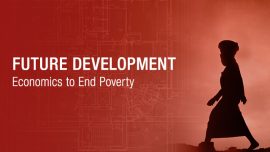
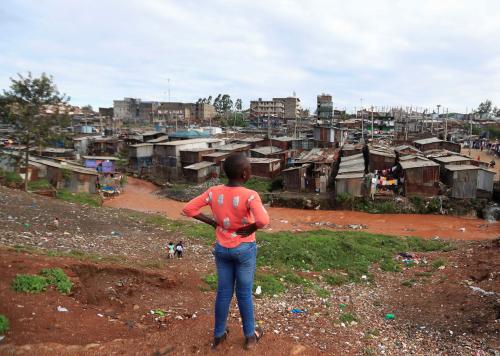
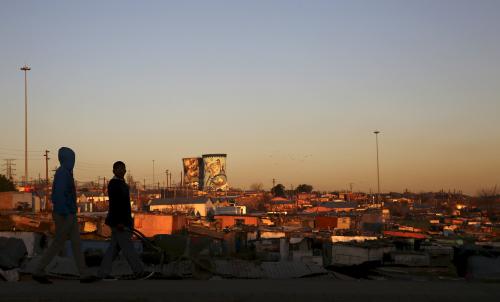
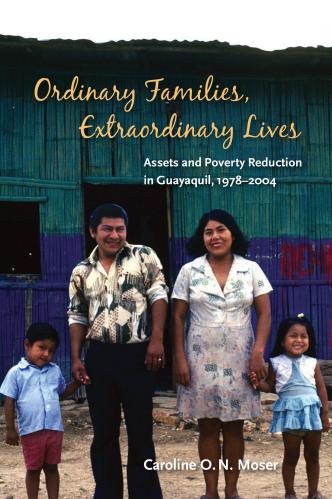
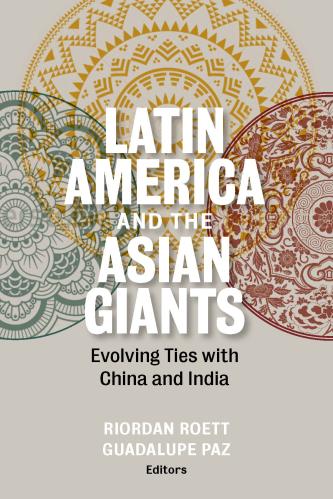





Commentary
How to end poverty? Give the poor cash and access to mobile money and text them reminders to save and take their meds—not.
February 6, 2017